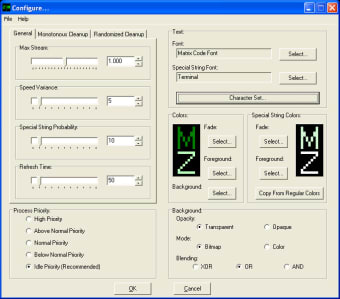
#ZMATRIX REFERENCE ATOMS BEST UPDATE#
If you update the powder pattern (right-click on the graph), you should see the base calculated graph change. In the newly appeared 'PowderPatternBackground' part, use the 'Object'->'Import' menu to import this 2-column file you have just created. Then add a background phase, using the 'Component'->'Add Interpolated Background' menu.This is free-format, as long as the two columns are separated by spaces, and using a dot '.' as a decimal as separator (not a comma). By using the zoom and the displayed, prepare a 2-column text file with the points you want to use to interpolate the background (see the backgd.txt file for example).The coordinates (2theta, intensity of the mouse pointer is displayed at the bottom). You can right-click on the graph to update the graph if you have changed manually a parameter. You can click & drag with the left button to zoom in (double-click to unzoom). You can display the powder pattern using the 'Pattern'->'Show Graph' menu.You can import the X-Ray data using the PowderPattern object 'Data'->'Import Fullprof Pattern', and select the cime.dat file in the Fox/example/tutorial-cimetidine directory.Go to the next tab 'Powder Diffraction', and then use the top 'Object' menu to create a PowderPattern object.Second step: create the PowderPattern object (X-Ray) This will save everythoing as an xml file, using a specific format to ObjCryst++/Fox. You can (should) save using the top Fox menu 'File'->'Save'.
#ZMATRIX REFERENCE ATOMS BEST FREE#
Fox will automatically decide which bonds are free torsion angles for the Global Optimization.Check Restraints within the molecule: look at the list of restraints or, look at the displayed 3D structure if there are no extra or missing bonds (Fox tries to add bonds depending on interatomic distances and tabulated atomic radius, so it can be wrong).You can see the cime.pdb and cime.fhz files in the example/tutorial-cimetidine directory.

To do this just use: " babel -ipdb cime.pdb -ofhz cime.fhz -d" (the -d option will get rid of the hydrogens). FOX can (so far) only import Fenske-Hall Z-matrices, but it is possible to transform a wide range of molecule structures to this type of files using either babel ( ) or openbabel ( ). Use the Crystal "Scatterer-> Import Molecule from Fenske-Hall Z-matrix" menu. A Z-matrix describes all atom positions from a first atom and bond distance, bond angles and dihedral angles with the other atoms (see for a description). You can create one empty molecule, and add atoms and restraints manually, but the simplest way to input a molecule is to import its structure from a Fenske-Hall Z-matrix. Creating the Molecule: The molecule is described using a list of atoms bound together by a list os bond lengths, bond angles and (more rarely) dihedral angle restraints.As we will be importing the molecule structure from a pdb file, this will be doe automatically. Generally before adding atoms you must first create the atom types, what is called 'ScatteringPower' in the program (see the PbSO4 tutorial for that).Use the right-button menu to update the 3D Display of the structure. (for high symmetries it can take a few seconds to find the asymmetric unit). You can change the spacegroup by entering either a symbol or the spacegroup number in the SpaceGroup Field (in our case, "P121/a1" will do).This will be useful to choose your Crystal Structures thereafter (nota that if you have several Crsyatl structures, they must all have different names). You should give your Crystal a name ("Cimetidine" or "My beautiful Molecule", "Napoleon 1er".) in the Field just after 'Crystal' (where it is written 'Change Me!').right-button click will display a popup menu to update the Crystal Display when you have changed some parameter (sometimes the program will try to do it by itself).

You can also use the '+' and '-' keys to change the distance, if you have a two-mouse button.


 0 kommentar(er)
0 kommentar(er)
